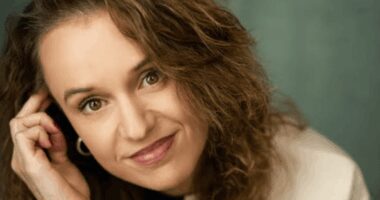Share this @internewscast.com
Nearly 16 million people have the most deadly type of liver disease, yet 80 percent of them have no idea.
About five percent of adults worldwide have metabolic dysfunction-associated steatohepatitis (MASH) a serious liver condition caused by fat buildup, inflammation, and scarring.
It’s the most dangerous type of fatty liver disease
MASH triggers liver scarring, which can progress to cirrhosis, and significantly increases the risk of heart disease, chronic kidney disease, and liver cancer.
Just one in five Americans with the condition are actually diagnosed.
Most patients do not experience symptoms until the damage is irreversible, making it a ‘silent disease’.
However, as the condition progresses, individuals may experience fatigue, pain or discomfort in the upper right belly, unexplained weight loss, weakness, and in some cases, jaundice (yellowing of the skin and eyes).
A coalition of researchers from the US, Europe, and South Africa said that MASH-related liver failure and other complications, including deaths, are becoming more severe and common.

More than 15 million people in the US, UK, Germany and France do not know they have the most aggressive form of fatty liver disease, according to new research
The scientists behind the report, published in The Lancet Regional Health Europe, are calling for a doubling in MASH diagnosis rates from the 2022 level, about 13 percent (the current rate is just under 20 percent).
They estimated that about 2.6 million people in the US, UK, Germany, and France have been diagnosed with MASH. But if testing were adequately improved and scaled up to become more accessible and commonplace, that figure could balloon to 6.1 million.
People with type 2 diabetes, obesity, and heart disease should be prioritized for blood work and other screening tests, which will need to skyrocket from about two million to 36 million.
Follow-up testing also needs to jump by nearly 1,300 percent to meet patient needs, and in more settings than liver clinics, such as family doctors’ offices, and with diabetes and heart doctors.
People with diabetes are especially prone to liver damage leading to MASH.
Around 30 to 60 percent of diabetics also have MASH.
Obesity is another leading risk factor, with estimates suggesting that 75 percent of overweight people and 90 percent with obesity will develop the condition.
People with MASH also have a tripled risk of also developing heart disease, including coronary artery disease, stroke, and heart failure, compared to people without the condition.
MASH diagnosis is poised for a major shift, mirroring past breakthroughs in chronic disease management.

While about four percent of adults in the US, UK, Germany and France have MASH, fewer than 18 percent are diagnosed. This leaves 16.7 million undiagnosed cases among up to 20 million affected
With new treatments approved and others on the horizon, the focus now turns to fixing systemic roadblocks.
Currently, limited access to non-invasive tests and reliance on specialists leave most cases undetected until late stages.
MASH arises from a cascade of liver damage typically linked to a buildup of fat in the liver, which triggers inflammation that damages liver cells and activates scar-forming cells.
What was once healthy liver tissue becomes stiff, progressively crippling the liver’s ability to detoxify blood. Though this is often painless until the damage becomes too severe to be reversed.
If caught early, people can live normal lifespans with MASH. Lifestyle changes – eating a healthier diet, exercising regularly, and losing between five and 10 percent of one’s body weight – can slow down the progression of MASH and repair some of the damage.
Doctors may prescribe resmetirom, the first FDA-approved medication for MASH, to work hand-in-hand with those lifestyle changes.
But severe damage can cause deadly conditions that cut a person’s life drastically short.
‘Each late-stage MASH diagnosis represents a missed opportunity for earlier intervention to prevent disease progression, threatening worse [liver] and [non-liver] outcomes for people living with the condition and greater costs for individuals, health systems, and societies,’ researchers told a Barcelona medical conference this week.

If caught early, patients can slow the progression of MASH and even reserve some of the damage by making lifestyle changes and losing weight. Doctors may also prescribe a medication for the condition that works alongside weight loss to reduce severe health issues
The solution requires concrete changes from moving diagnostics to implementing automated tools in electronic records.
The researchers said that success in improving diagnostics goes beyond devising better tests. A fundamental reworking of methods of care is needed that catches at-risk patients before irreversible damage occurs.
‘Paradigm shifts do not occur in a vacuum, but arise when leaps in science, technology, and innovation are coupled with changes in perception and understanding within a community,’ they said.
‘A confluence of factors in 2024 and expected drug approvals in many European countries in 2025 point to a near term tipping point for MASH diagnoses; nonetheless, focused and sustained efforts are needed to turn such opportunities into reality.’

















